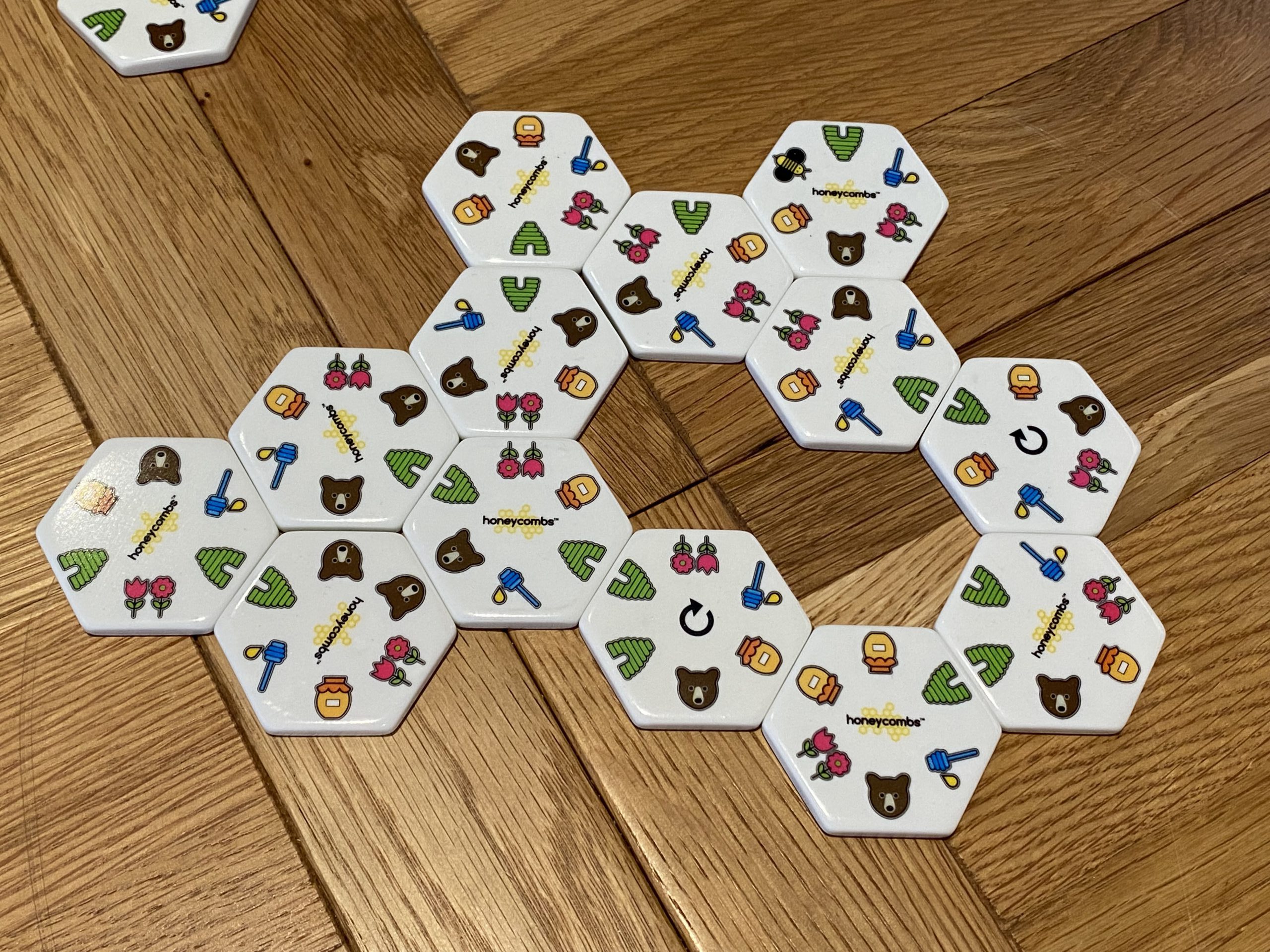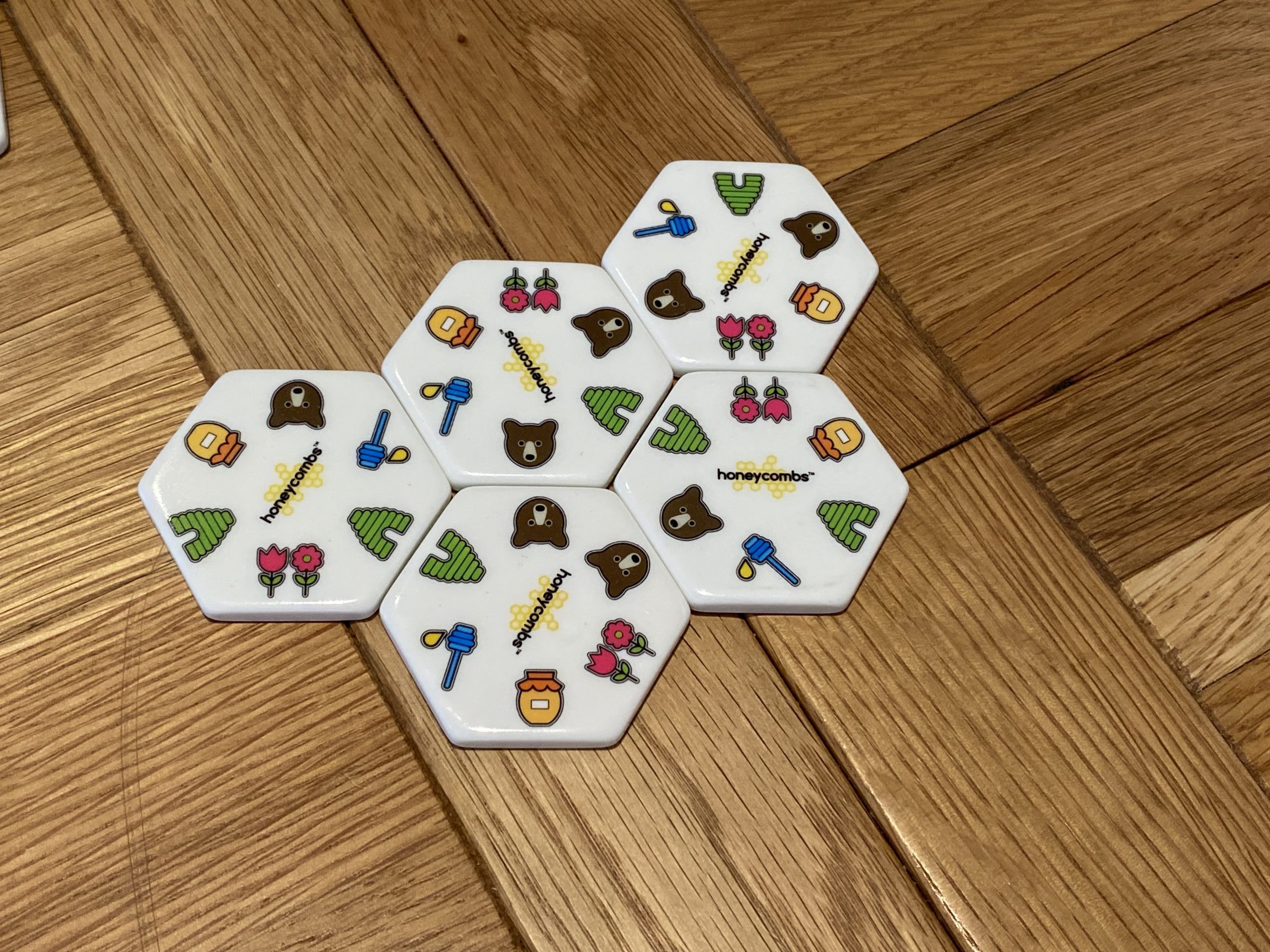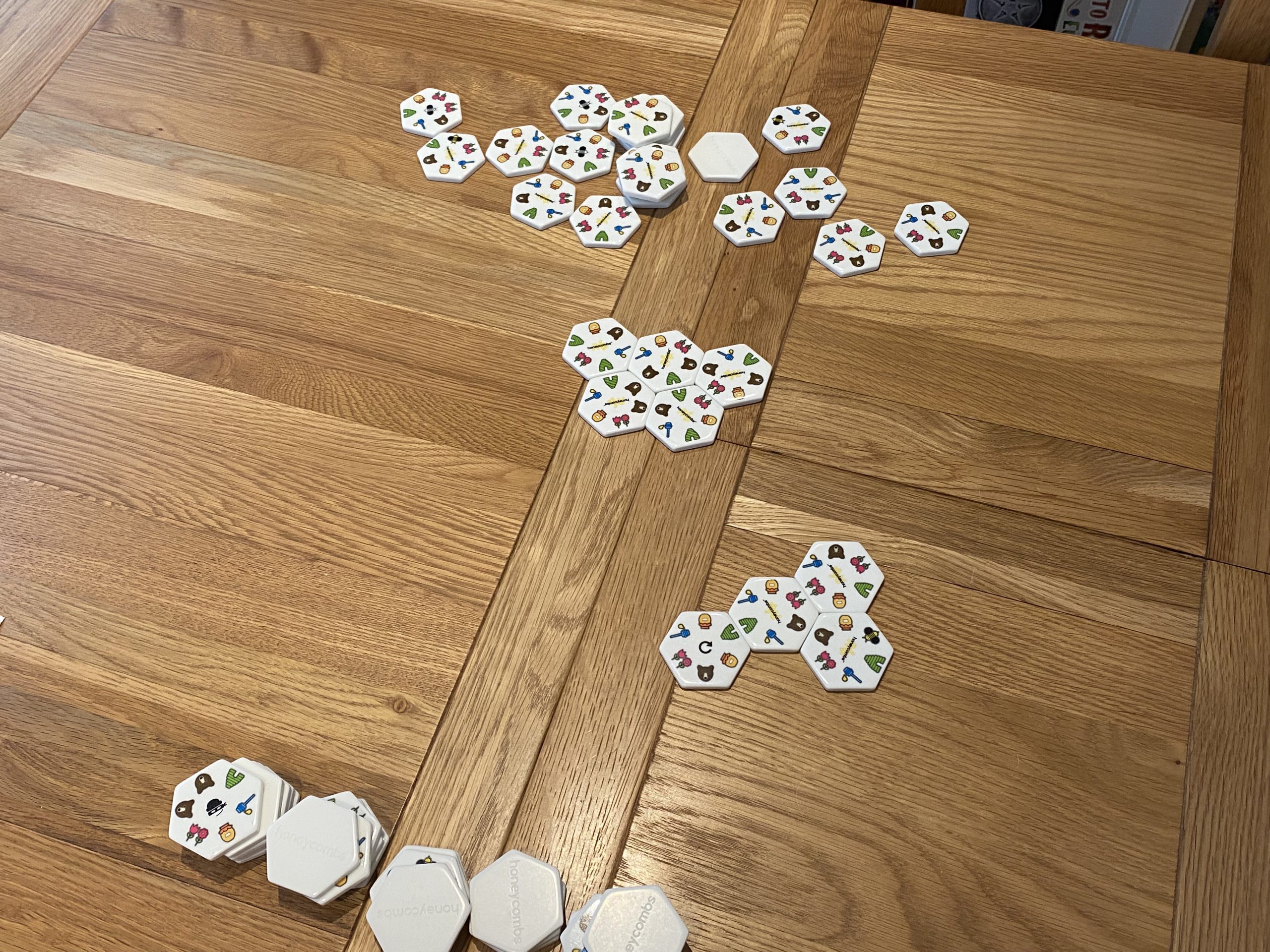Honeycombs is tactile and versatile kids game that you can play anywhere
Imagine picking up a bright yellow bag that weighs a lot more than it should. Now picture yourself putting your hand into the bag and finding it full of thick, smooth-edged hexagonal tiles that have considerable weight and character to them. Now pull one out and examine the bright, pleasant artwork on each edge — this is Honeycombs, a Gibson’s Games product that offers remarkable component quality and three different ways to play.
In Honeycombs, regardless of which variant you play, you’ll be placing these gorgeous tiles onto your table and matching the symbols on adjacent edges. In the most competitive variant (where each player builds their own honeycomb using an even split of the tiles) every tile except one must match at least two adjacent tiles, introducing a fiendish puzzle and a race against the opponent(s) who will be doing the same thing.

In the second variant, players build one single honeycomb and simply score points based on how many sides they can match when placing their piece. In this version, central symbols on the tiles can trigger special effects such as additional turns or bonus points. For the final version, the players work cooperatively to build one large honeycomb in the style of a jigsaw puzzle — optionally recording their own score and trying to beat it next time.
Honeycombs is super, super simple and I quite frequently play it with my eight, six and three year old children. Without doubt, the older two are fully capable of playing it in any mode, whilst even our youngest can grasp the concept — even if she often loses patience halfway through. The big chunky pieces are large enough for me to feel comfortable with her having them, as based on my experience they are too big to swallow and because they are so chunky, she is happy to build towers with them, or clack them on the table in between turns and hasn’t seemed interested in reimagining them as cookies.

In terms of gameplay, we enjoy all three modes — although it can depend on who is playing. In the first, most competitive mode where each player builds their own honeycomb, I often play just with our eldest — and I often lose. In this mode you can see all of your tiles (fifty-two divided by player count) and it’s a race to place them all properly. Kids in general seem to love this mode, and whilst in the early games we found lots of mistakes (which meant I won) they are now getting both faster and more accurate than I am!
In the second mode (where each player has three tiles in front of them and must draw a new one after making a placement) the players make a combined honeycomb and score on a piece of paper. This mode is simpler in some ways since there are less choices to make (you’re only choosing from three tiles and don’t need to match two sides with each tile) but it is also more strategic for a couple of reasons. Firstly, you can use the special effects to score better or disrupt opponent turns, and secondly, whilst you can almost always match a tile with one existing side (one point) you’ll quickly fall behind that way, and should always aim for at least two.

Whilst the first mode offers fast paced excitement and the need to race an opponent whilst also minimising your own mistakes, the second mode is a slower, more thoughtful experience which is preferred by older players or those who prefer more time to think — our children’s grandma, for example. The fact that two modes which are so widely opposed exist within a single game, sharing 90% of the same rules and 100% of the same components is quite a feat and must be applauded.
The final mode (where players create a cooperative honeycomb) feels very much like an easy or beginner mode — which in our house allows our youngest to participate and feel that she is adding something that matters. Yes, she is a bit young and she often cheats, misunderstands or knocks the other hexes flying, but for brief windows she is fully able to get involved and that is a really nice addition that very few games have as a core mode.

Overall, Honeycombs is a really lovely product that is worth the cost of entry for the components alone really, however the versatility it brings is why you’ll still be throwing it in the boot of your car on family holidays long after you make the purchase. With modes for young kids and non-gaming adults, every game in Honeycombs is simple to teach, simple to play and rewarding in terms of the smiles-per-hour that it provides.
You can find Honeycombs on Amazon.
Comments are closed.